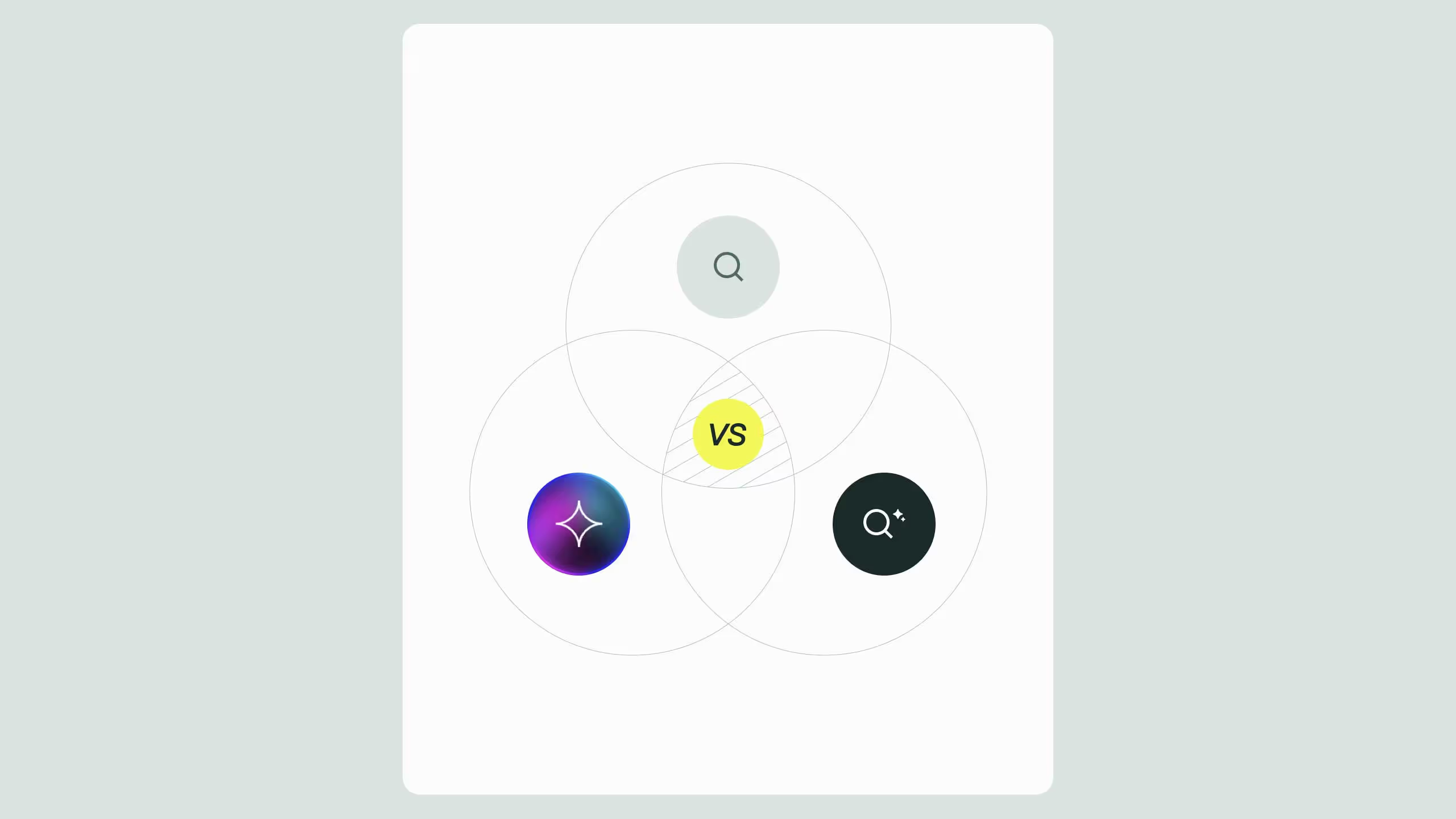SEO vs GEO vs AEO for business websites

SEO, GEO, and AEO each serve different but connected roles in shaping your website’s visibility. SEO builds organic authority and search rankings, GEO ensures your content is properly interpreted by generative AI engines, and AEO helps your Webflow pages become top answers in voice and AI-driven results. Together, they form a layered strategy that keeps your brand discoverable across both traditional search and AI-powered discovery channels, future-proofing your digital presence and protecting content integrity.
If you’re a business owner using Webflow and aiming to scale your digital presence, you’ve likely heard about SEO, GEO, and more recently, AEO. But what do these terms actually mean, how do they differ, and most importantly, which one is best for your business? This article breaks down the key differences between SEO vs GEO vs AEO, so you can make informed decisions about how to grow your visibility and rankings without risking penalties or bans from platforms like Google and Bing.
Whether you’re managing SEO in-house or working with a Webflow developer, understanding how these optimization strategies work, and how they apply to your site, can be the difference between ranking on page one or getting buried under competitors.
Understanding SEO: the foundation of digital visibility
Search Engine Optimization (SEO) is the practice of enhancing your website to improve its visibility in organic search engine results. It includes everything from on-page optimization like keyword targeting and metadata, to off-page factors like backlinks and domain authority.
For Webflow users, SEO often starts with clean site structure, semantic HTML, optimized images, and mobile responsiveness. Using Webflow’s CMS, businesses can manage content in a way that aligns with search engine best practices.
Why SEO still matters:
- Brings in high-intent traffic without paid ads
- Builds long-term domain authority
- Improves user experience and site speed
- Converts users through structured content
However, SEO alone is no longer enough in a competitive landscape where AI engines and personalized content delivery are becoming the norm.
What is GEO and why does it matter?
Generation Engine Optimization (GEO) is an emerging discipline that focuses on optimizing content specifically for generative AI engines rather than traditional search engines. Unlike classic SEO, which targets search crawlers like Googlebot, GEO ensures that your content is accessible, understood, and accurately interpreted by AI engines like ChatGPT, Sora, and Claude.
For corporate websites built on Webflow, GEO involves structuring your content so that it can be referenced properly in AI-generated summaries, responses, or citations, without losing context or branding.
Why GEO is important for modern businesses:
- Ensures your content is visible in AI-generated search answers
- Prevents misinformation or misrepresentation by generative models
- Protects proprietary data from being misused by AI crawlers
- Enhances trust and control across platforms beyond search engines
To learn how GEO strategies apply to Webflow sites, check out our GEO SEO Checklist for Webflow Optimization.
AEO: the next evolution in search optimization
Answer Engine Optimization (AEO) focuses on tailoring your content so it can appear as a direct, authoritative answer in search engines and AI-powered assistants. While SEO targets ranking on result pages, AEO aims to position your Webflow site as the top resource when users search via conversational queries, voice assistants, or AI-driven answer boxes.
In the context of Webflow, AEO means creating highly structured, context-rich content that search engines and answer engines can easily parse, understand, and feature.
Benefits of AEO:
- Increases visibility in featured snippets and AI-generated answers
- Aligns with voice search and conversational search trends
- Builds authority by becoming the go-to answer source in your niche
- Drives qualified traffic directly from zero-click search results
But AEO must be handled with care. Over-optimizing for quick answers without providing depth can reduce user engagement. Combining AEO with robust SEO and GEO strategies ensures your Webflow site remains relevant across both traditional and AI-driven search experiences.
SEO vs GEO: which one should you prioritize?
When comparing SEO vs GEO, think of them as complementary rather than competing strategies. SEO helps you rank on search engines like Google and Bing, while GEO ensures your content remains relevant and usable in AI-driven platforms.
If you’re targeting high-intent users through search engines, SEO is your primary focus. If you want to future-proof your content and brand representation in generative engines, GEO becomes essential.
Together, they create a holistic optimization strategy that covers both traditional and emerging digital discovery channels.
When to use AEO
AEO is best used as an enhancement layer to your existing SEO. It shouldn’t replace human insight or broader strategy, but rather support it. Use AEO for:
- Optimizing FAQ pages to answer high-value questions directly
- Structuring blog posts for featured snippet opportunities
- Creating authoritative resource hubs for your niche
- Aligning content with natural language queries for voice search
Before integrating AEO techniques, conduct a technical SEO review. Consider booking a Webflow SEO Audit to identify where AEO can drive results without sacrificing depth or user engagement.
Strategic takeaways for business website owners
Medium-sized businesses and corporate websites often face unique challenges in scaling digital reach while preserving content quality and brand voice. Here’s how to approach your optimization:
- Start with solid SEO fundamentals using Webflow’s native SEO features
- Incorporate GEO to align your content with generative engines
- Use AEO carefully to target featured answers and voice search opportunities
- Protect your content from unauthorized use with robot.txt and Cloudflare AI controls
- Monitor all optimizations regularly and refine them based on performance data
Conclusion: building a sustainable optimization strategy
The conversation around SEO vs GEO vs AEO isn’t just theoretical, it directly impacts your site’s performance, visibility, and conversion potential. As a Webflow and SEO specialist, I recommend adopting a layered approach. Use SEO to capture traditional search traffic, implement GEO for future-readiness in the AI landscape, and leverage AEO to secure top spots in answer engines and featured results.
If you’re serious about optimizing your Webflow site for both today and tomorrow, check out our Webflow SEO services.

.svg)
.svg)


.svg)




